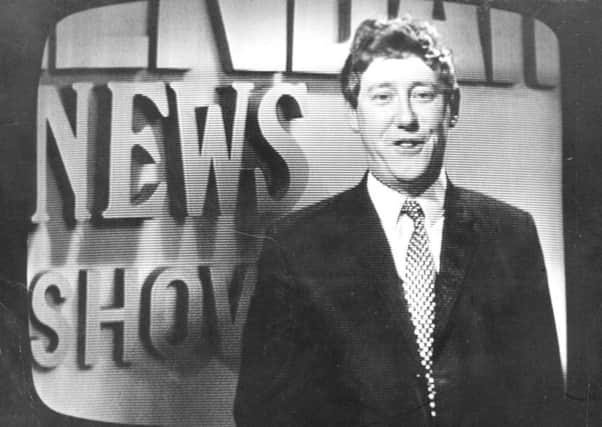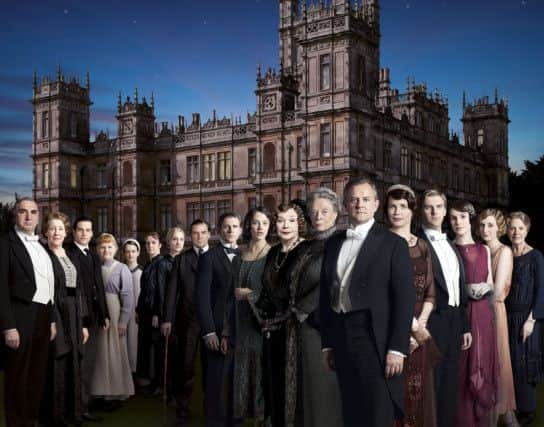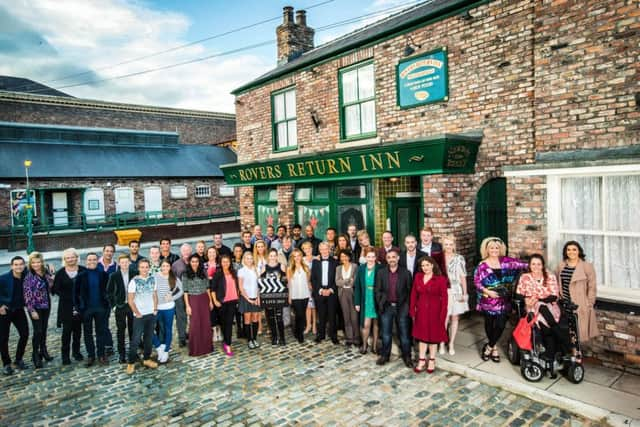60 years on - ITV’s secret history


The pressure to licence a second channel had given him good reason to worry. When footage of the Coronation aired on NBC’s Today Show in America it had been interrupted by adverts featuring a chimpanzee.
But Churchill - never a fan of television in the first place - gave way to the powerful commercial lobby and in September 1955, ITV was foisted upon the nation.
Advertisement
Hide AdAdvertisement
Hide AdNot the whole nation, though - Yorkshire had to wait another year until the Independent Television Authority could commission a transmitter on the moors above Huddersfield.
So the north missed the first commercial, for Gibbs SR toothpaste, exactly 60 years ago tonight. Whether Churchill was watching is not recorded.
Weekday programmes for our region came initially from Granada, which liked to begin each one with the legend, “From the North, this is Granada” - even on its variety series Chelsea at Nine, which was neither from the north nor scheduled at nine o’clock.
Advertisement
Hide AdAdvertisement
Hide Ad

Yet it was this big-name variety format that defined ITV in its earliest days. “Chelsea” was an upmarket version of the channel’s biggest hit, Sunday Night at the London Palladium, produced by ATV, whose executives Lew Grade and Val Parnell conveniently also controlled most of showbusinesses’s talent and real estate.
Other early successes included the Granada sitcom The Army Game, high-stakes quizzes like Rediffusion’s Take Your Pick and Double Your Money, and, from 1960, Coronation Street.
It was not until 1968 that Yorkshire became a region in its own right. The new contractor, Yorkshire TV, constructed Europe’s first purpose-built colour TV studio on Kirkstall Road in Leeds, and its initially fragile finances managed to survive the catastrophic collapse of the Emley Moor transmitter eight months after going on air.
Yorkshire’s earliest stars were TV traveller Alan Whicker, lured across from the BBC; Jess Yates, whose sanctimonious on-screen persona endeared him to millions as host of Stars on Sunday; and Austin Mitchell, a lecturer-turned-journalist who presented Calendar for nine years before becoming Labour MP for Great Grimsby.
Advertisement
Hide AdAdvertisement
Hide Ad

Yates was the first of the three to depart - making an ignominious exit in the boot of a car, having been exposed in the tabloids for his affair with a young actress. Hughie Green, host of YTV’s quiz show The Sky’s The Limit and later revealed as the biological father of Yates’s daughter Paula, was said to be behind the expose.
Today ITV is known for blockbusters like Downton Abbey and The X Factor, and advertising has matured from toothpaste commercials to viral videos. Little could Churchill have known the kind of monster he allowed to be unleashed.
When ITV had a licence to lose money
THE commercial network was famously described by Lord Thomson, boss of Scottish Television, as a licence to print money. But the opposite was true in Wales, home to the only ITV company ever to go bust.
That was the unfortunate WWN TV, which in 1961 had been awarded a contract to transmit to the predominantly Welsh-speaking corners of the principality.
Advertisement
Hide AdAdvertisement
Hide AdThe company was doomed from the start. Most of its viewers could already receive ITV from the neighbouring regions of South Wales and North West England - and they preferred to see favourites like Coronation Street in prime time, rather than the ten hours a week of Welsh discussion programmes WWN was obliged to produce. The station staggered on for just 16 months before drowning in debt. Its area was absorbed into the larger South Wales and West of England region, never to be restored.